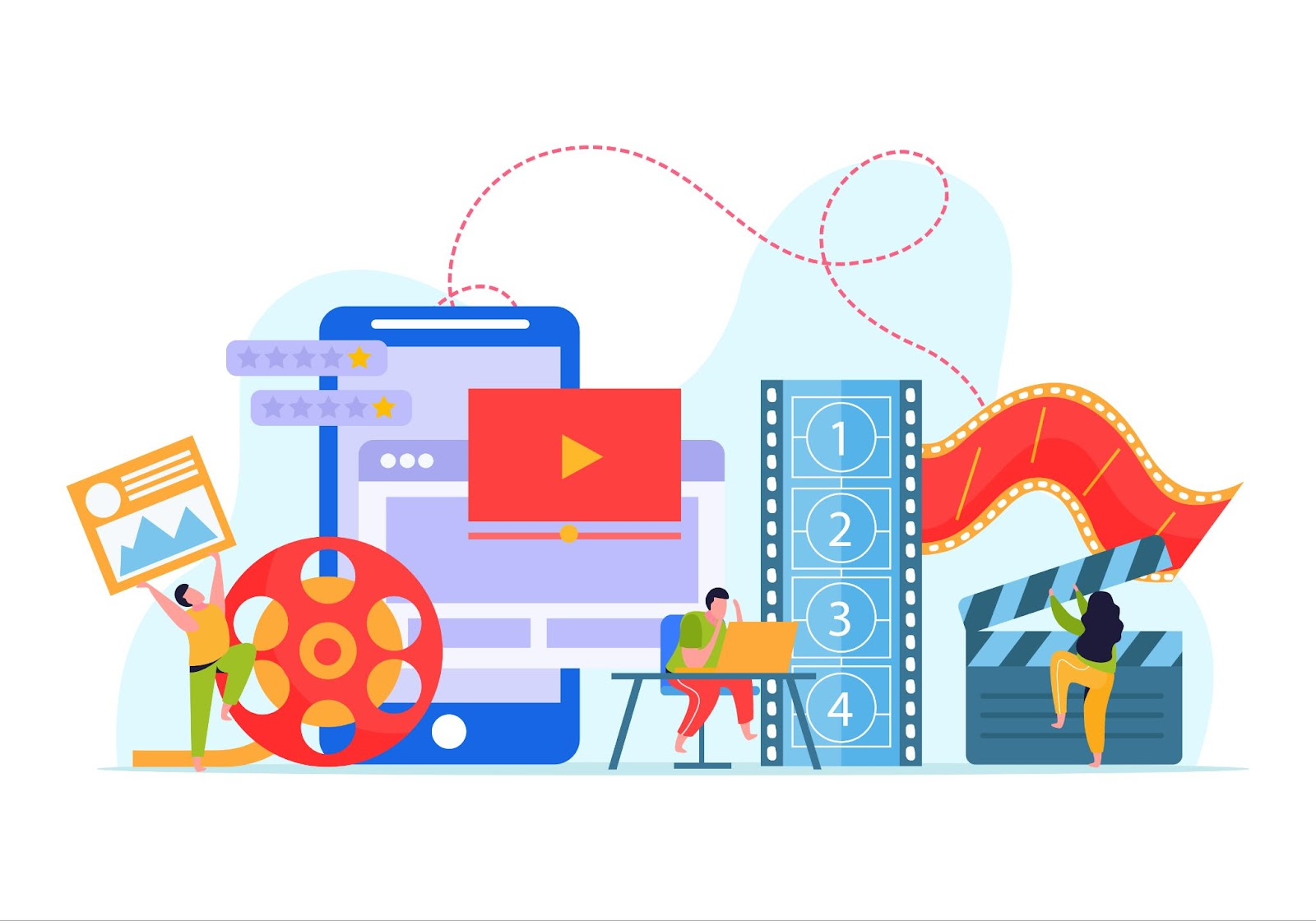
| Startups can create professional video content without breaking the bank by planning strategically, using affordable video production tools, repurposing existing assets, and leveraging animation. These budget-friendly video strategies help young businesses engage audiences, build brand credibility, and grow cost-effectively. |
In today's B2B world, video is essential. Startups use video for product demos, investor pitches, customer onboarding, and brand storytelling. Video has become the most powerful tool for startups looking to make an impact.
You don't need expensive gear to create professional videos. By combining strategy with affordable tools, startups can deliver quality video content while keeping costs low.
This guide covers gear, software, and workflow for professional-grade video content on a startup budget.

Picture Credit: Freepik
Before diving into tools, it's important to understand why video should be prioritized, even when resources are tight. Key benefits include:
For startups competing in crowded markets, video is about standing out, building trust quickly, and accelerating growth.

Picture Credit: Freepik
Startups face a key choice: live-action video or animation? This decision impacts budget allocation and content timeline.
Live-action video works best for building personal connections: founder stories, team introductions, and testimonials. It's immediate and shows the human side of your brand.
Animation excels at explaining complex concepts, maintaining brand consistency, and delivering polished results without lighting, location, or performance variables. For B2B startups, especially in tech and SaaS, animation offers advantages.
For example, eSIM service providers often use animated videos to clearly explain how their service connects users to mobile
networks without the need for physical SIM cards.
Many successful startups use both approaches - animated explainer videos for product demos and live-action footage for culture and testimonials.
While live-action video requires ongoing investments in equipment, locations, and talent, animation operates on a different economic model. Here's how the costs compare:
Traditional live-action video – indicative U.S. street prices
Animation video costs:
Note: All prices listed are in USD, pre-tax. EU/UK readers should expect approximately 20% additional VAT.
The cost of additional videos drops dramatically once you've established your workflow and asset library. Create a character rig, color palette, and template library once, then reuse these elements across dozens of videos.
With live-action, you need a reshoot; with animation, it's often just tweaks to existing assets.
Note: All prices listed are in USD.

Picture Credit: Freepik
Beyond cost savings, animation offers strategic advantages that align with startup constraints and goals. These advantages include:
Your animated spokesperson never requires makeup or stumbles over words. Once you establish visual brand guidelines, every piece of animated content reinforces your brand identity.
B2B startups often deal with abstract concepts: APIs, data flows, security protocols, and user journeys. You can show data moving through systems, illustrate user workflows, or demonstrate ROI through dynamic charts.
Animation allows faster iteration than live-action video. Need to pivot messaging based on customer feedback? Update your animated explainer in days, not weeks.
Animated videos translate more easily across cultures and languages.
Smartphones and entry-level mirrorless cameras deliver quality results. Your main options are:
Invest in a simple tripod or gimbal to avoid shaky footage.

Picture Credit: Freepik
Professional audio doesn't have to cost much. Your best options include:
Lighting transforms your video from amateur to professional. You don't need expensive studio kits. Consider these affordable options:

Picture Credit: Freepik
You can achieve excellent results without expensive software. Options by skill level:
AI-powered platforms can speed up editing, automate captions, and generate AI video from image inputs.
Pre-built templates for intros, lower thirds, and outros cut editing time while ensuring consistent branding. Platforms like Envato Elements and Motion Array offer business video templates.
Animation-specific resources:
Scheduling tools like Buffer and Hootsuite let you plan video distribution across LinkedIn, YouTube, and other channels.

Picture Credit: Freepik
For B2B startups, focus on platforms where your audience spends time. Key channels include:
Animation requires different SEO than live-action content. Since search engines can't "watch" your video, metadata becomes critical.

Picture Credit: Freepik
Track video performance with metrics that tie directly to business outcomes. Focus on these key areas:
Animation content performs differently from live-action video:
Tools like Google Analytics, HubSpot, and native platform insights provide data to refine your approach.
Professional video production is now accessible to any B2B startup with the right tools and approach. The choice between live-action and animation depends on your specific needs: live-action builds personal connections, animation explains complex concepts, and hybrid approaches maximize both strengths.
Start with your most critical video needs first. Master one approach, measure results, and then expand your capabilities as your startup grows. The tools and strategies in this guide will scale with you from pre-revenue to enterprise.
The democratization of video technology means your startup can compete visually with much larger competitors. The only question is when you'll start.
US Office (Sales & Marketing)
371 Hoes Lane, Suite 200, Piscataway, New Jersey - 08854
US (732) 387-3864
(Render 5 Technologies Pvt. Ltd.)
India Office (Production)
WeWork, 246, Udyog Vihar,
Gurugram, Haryana - 122016
IND (+91) 98713 30069
SERVICES
ANIMATION STYLES
INDUSTRY
Copyright © 2025 Broadcast2World, Inc. All Rights Reserved.
No Comments Yet
Let us know what you think